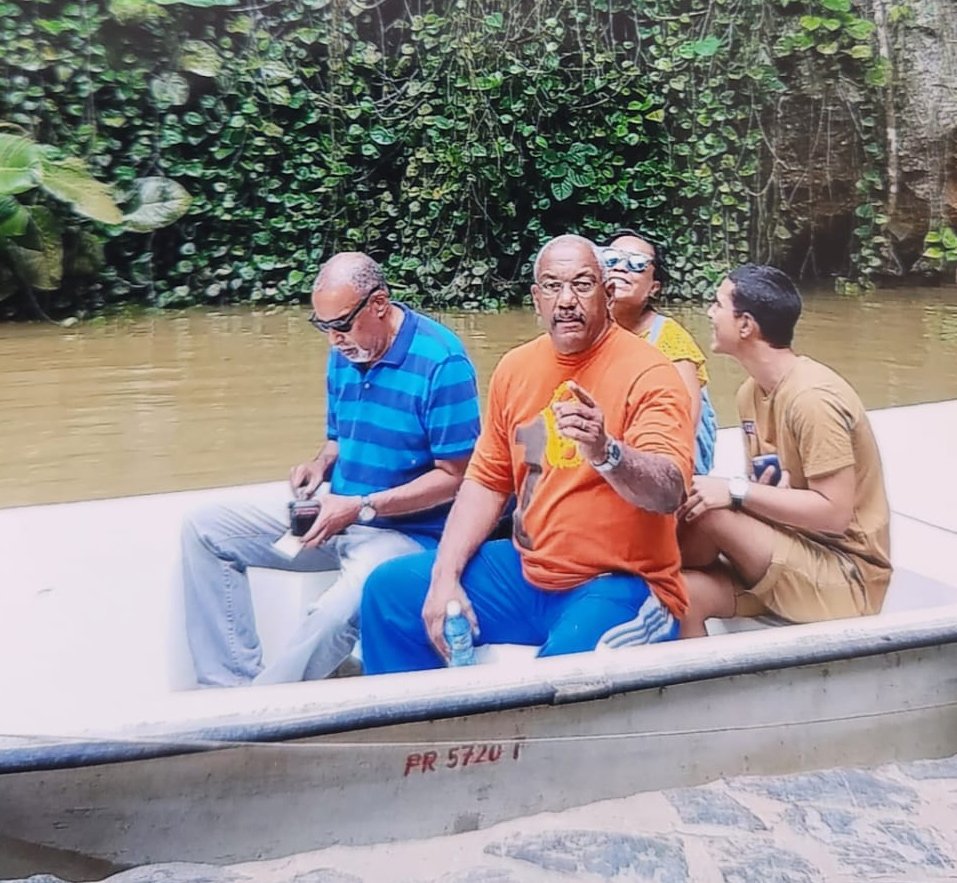
By Robert Alan Glover
(OSV News) — Ricardo E. Gonzalez Zayas was one of over 14,000 Cuban children who were part of “Operation Pedro Pan” — a secret, mass exodus to the U.S. via air between 1960-1962 from the newly created communist nation located just 90 miles from our Florida coast.
“I have to say that, because of the Catholic Welfare Bureau (in Miami), I got three square meals a day, a roof over my head, and the best education that one could hope for,” Gonzalez Zayas told OSV News.
Gonzalez Zayas has written about his story of flight from Fidel Castro’s tyranny in 1962, racial discrimination (in the United States), and finally securing for himself and his parents a new life in his 2020 memoir, “BLACK Pedro Pan.”
Married with two children and four grandchildren, Gonzalez Zayas told OSV News the 180-page book “is something that I always wanted to write, and that other Pedro Panners whom I was close to always said I should write — but I waited until my retirement when I had time to do so.”
Gonzalez Zayas said the book took a year to write, and said it was “not difficult at all to accomplish for two reasons.”
“One, I had stayed in touch with a tightly knit group of Pedro Panners, including two who were fellow Black ones that I had attended a Jesuit school with,” he said. “The second reason was even simpler, because I was writing my story — and writing it as a Black Cuban.”
“Most people, when they hear the word ‘Cuban,’ immediately think of either Ricky Ricardo from “I Love Lucy” or film actor Andy Garcia, but we are not all that light-skinned,” Gonzalez Zayas said. He explained, “My father was from Africa, and he and my aunt were both very Black, while my mother’s family tree was much more complicated; more lighter-skinned than her husband’s, but also one that ran the gamut from lighter to darker.”
Gonzalez Zayas, who was born in Cuba in 1949, said, “I had a vague understanding of why I was leaving (due to the government’s closure of schools), but there was also a rumor afloat that children would become wards of the state.”
Upon his arrival in Florida, Gonzalez Zayas lived in a temporary children’s shelter called Florida City, a huge enclosed compound of apartments.
“I had no contact with the Floridian culture for a whole year, which explains why — when I boarded a bus, sat down in front and was made to move to the rear — I did not understand the reason why,” Zayas said.
The reason — Zayas’ dark complexion — is expounded on by Devyn Spence Benson, currently a professor of history and African American studies at the University of Kentucky and author of “Antiracism in Cuba: The Unfinished Revolution.”
“As he told me in July of 2012, ‘Black Cuban exile is not the same experience as white Cuban exile, and the difference is like the elephant in the room that no one wants to talk about,'” Benson explained in her forward to Gonzalez Zayas’ book. She noted that Gonzalez Zayas’ story also is about how he and his parents made a new life in “a country known for its anti-Black racism, to which they had sent their only son.”
Gonzalez Zayas’ experience of racism, however, is not a straightforward experience of white American racism in Florida during the Civil Rights era.
“I — and my parents who followed me — arrived in Miami at the time of the restaurant counter sit-ins and so on,” the author noted. “Miami was very, very white and racialized, but as early migration from Cuba, Puerto Rico and elsewhere picked up, the majority (white) population left.”
However, Gonzalez Zayas explained this just introduced a different kind of anti-Black racism to Miami that persists today.
“Today Miami is a city of white Cuban rule, and although Hispanic/Cuban racism is different — and also very complex — the end result is still the same: Miami has not been friendly to Black people or (Black) Cubans — ever,” Gonzalez Zayas said.
Not that this young refugee — especially as he got older — let this obstacle stop him.
“I attended St. John the Apostle Catholic Elementary School, Belen Catholic prep school — the most prestigious one of its kind in Miami — Monsignor Pace Catholic High School, and St. Thomas University,” recalled the author. He graduated with a liberal arts degree from Biscayne College in Miami and then worked with the Travelers insurance company for 27 years, the Miami city government, and finally the Miami-Dade County government.
Fellow Pedro Pan alumna Juanita Garcia shared her thoughts about the book and its author.
“I arrived in Miami in 1962 along with my brother, and as I understand it, Ricardo came before us,” Garcia told OSV News. “We all went to the Florida City compound, although unlike Ricardo, my brother and I stayed there for a couple of weeks.”
Garcia said the public’s unfamiliarity with Operation Pedro Pan, in her opinion, “stems from the fact that despite Cuba being in the picture, and Miami being our destination, the whole thing was still localized.”
“There was no way for people to learn about it, and therefore today most people still don’t know about it,” Garcia said.
Garcia said she had encouraged Gonzalez Zayas to write this book, so that his experience as a Black Cuban — as opposed to a white Cuban — could be better known.
“My experiences were not the same as his, and it is interesting to note the ways in which he now sees these experiences, many years afterward,” Garcia said.
